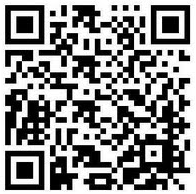
For starters, the company said today that it began sending out two-dimensional barcodes to more than 100,000 local businesses in the U.S. This will enable mobile phone users to snap a picture of the barcode (known as a QR code and pictured to the right) and trigger a search for the local business. Right now, the capabilities for the program are fairly basic — you can find reviews of the place, get a coupon if the business is offering one or mark the business for remembering later.
[aditude-amp id="flyingcarpet" targeting='{"env":"staging","page_type":"article","post_id":145179,"post_type":"story","post_chan":"none","tags":null,"ai":false,"category":"none","all_categories":"business,social,","session":"A"}']On top of owning a smartphone, a user will need to have an app that can read QR codes like the $1.99 QuickMark app for iPhones or the Barcode Scanner app for Android-based phones. Google also recommended BeeTagg and NeoReader.
The second and more distant development is a product Google is testing called Goggles. You can take a photo of a place and query Google for related information. If this were accurate, it could boost the volume of search queries dramatically. It might even make two-dimensional barcodes obsolete if you could combine accurate logo recognition and GPS coordinates to identify a business. Unfortuantely, that’s a bit far off. Google hasn’t launched it publicly although they did talk about it in a CNBC special this month embedded below. Update: Google actually launched Goggles today in labs! We’ll keep you updated with some forthcoming posts.
AI Weekly
The must-read newsletter for AI and Big Data industry written by Khari Johnson, Kyle Wiggers, and Seth Colaner.
Included with VentureBeat Insider and VentureBeat VIP memberships.
VentureBeat's mission is to be a digital town square for technical decision-makers to gain knowledge about transformative enterprise technology and transact. Learn More
